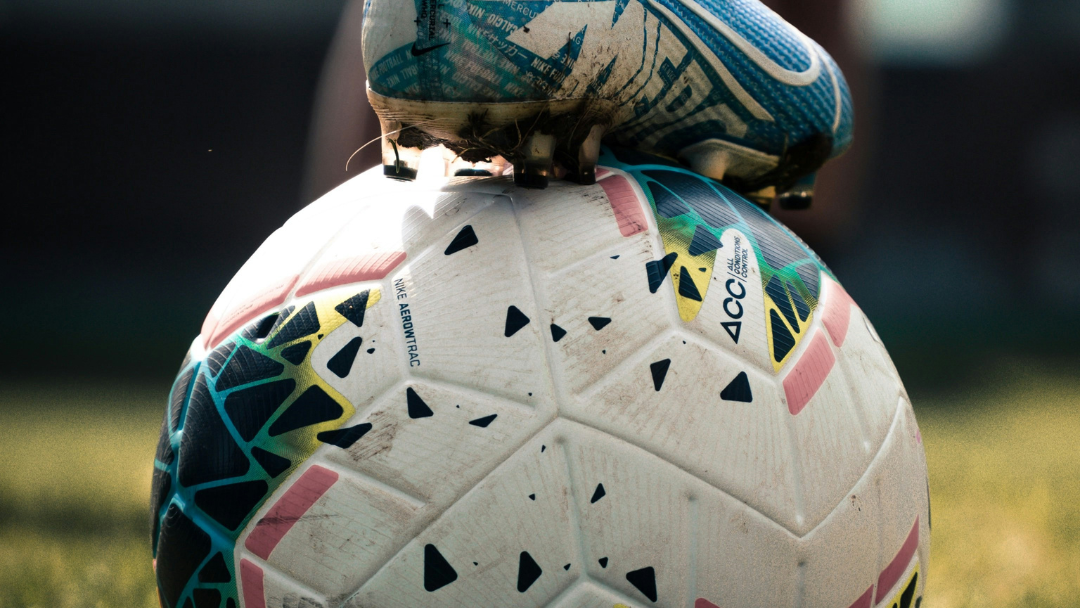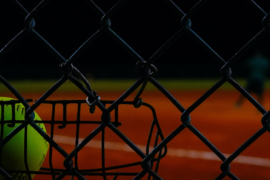On this August afternoon, the summer sun blazing in the western sky, I’m one of 15,000 enthusiastic spectators watching a women’s professional soccer match. Men, women, and children cheer from the stands. They wear the team’s emblem on hats and hoodies, players’ names on tee-shirts. That’s what fans do at sporting events, but these are women’s names, a women’s team, and men cheering for women athletes—something I’ve never seen before.
My friend Kris and her husband were swept away by the newest addition to our city’s professional sports scene when the San Diego Wave Fútbol Club played their 2022 inaugural season. Last year they bought season tickets, premium seats dead-center and two rows off the field. When Kris’s husband couldn’t attend today’s game against Angel City FC, the Wave’s Los Angeles rival, she asked if I’d like to join her. I’m a champion of women’s athletics, happy to see the gains being made, but this is my first opportunity to see women’s soccer in person. I jumped at the invitation.
Soccer is a foreign language to me. I’ve seen bite-sized snippets on TV, but I found the game too fast and confusing, and I wasn’t motivated to give it a chance. Now, I’m bedazzled by the fast-paced action. Trying to follow the nonstop rapid-fire play from one end of the field to the other takes all my attention. Up close and personal: every play, every feint, every kick; split-second shots on goal and breathtaking saves take place right in front of me. And along with the excitement of the game and the players’ athleticism, I’m doubly delighted to see the men and boys in the stands rooting for these women as they would for the Padres or their favorite NFL or NBA team.
Women’s professional soccer in San Diego joins the surging tsunami throughout the U.S. and around the world. The Wave inaugurated the new Snapdragon Stadium with a sellout of 32,000 seats in September 2022, a single game record for the National Women’s Soccer League, and continues to lead league attendance.
Women’s soccer has its roots in 19th-century England; now 176 professional teams participate worldwide, still battling adversity and discrimination to break through longstanding barriers and gain some semblance of equality. In 1921 the British Football Association forbade women’s games on grounds used by member clubs, saying the game was “unsuitable for females.” You know, our delicate constitutions. The ban wasn’t lifted until 1971.
The first Women’s World Cup was played in 1991. The U.S. team won that first contest and three more since, most recently in 2019. The 2023 contest drew a viewership of more than two million people. Women’s soccer is outpacing every other sport in America. “Soccer is perfectly suited for a country of the hamster-treadmill pace, the remote-control zap and the national attention deficit,” according to Jere Longman in The Girls of Summer: The U.S. Women’s Soccer Team and How it Changed the World. Like Billie Jean King and Venus and Serena Williams in tennis, women’s soccer has its heroes: Mia Hamm, who started her pro career at 15; Brandi Chastain, who scored the winning penalty kick in the 1999 World Cup and for whom a statue was erected in the Rose Bowl; Megan Rapinoe and Alex Morgan, stars of the 2019 Cup. Girls see successful women athletes as role models; boys see how talented and skilled the women are.
Minutes into the game I’m hooked. Agog at the flying feet, the speed of the game, the skill and agility of the women, every shot on goal, every save, every header. I drill Kris with questions: What was that? Why did the ball change sides? Wasn’t that a foul? Why does the goalie get to run into the field? Wasn’t that a goal? I’m on my feet when eighteen-year-old Jaedyn Shaw scores for the Wave eleven minutes into the game, her moves so quick I almost miss her goal shot. Angel City comes back and ties the game, and while there’s no more scoring, the action never stops. When the 45-minute half ends, I’m exhausted and exhilarated. I’m a lifelong baseball fan, product of a New York baseball family, but I have to admit—baseball was never like this. Vive la difference.
At halftime we escape the sun that’s been hammering our faces and retreat to the private Field Club, a perk with Kris’s seats. I’m eager to explore the new stadium, bright, clean, and airy in contrast to its predecessor, crumbling old Qualcomm. We circle the stands and hit the concessions: a beer from the local Alesmith Brewing, then we divide and conquer, Kris opting for a Hodad’s hamburger (believed to be San Diego’s best), while I sample shrimp tacos from The Taco Stand.
During the second half I’m catching on to the game and adapting to the tempo; I start to pick up on the moves, the tactics, the teamwork. Dribbling, passing, shooting—the terminology evokes basketball, as does the pace, but it’s all with the feet, relentless rapid-fire back and forth. Skillful, sudden, and sometimes sneaky shots on goal are matched by the goalies’ stunning saves.
Soccer has become the country’s fastest growing sport in high schools and colleges. In the 1970s, when my daughter was young, soccer wasn’t on the radar. A decade later, the youth soccer boom had taken hold, and kids everywhere were booting balls around schoolyards and backyards. Girls and boys alike, it was the great equalizer in youth sports. A friend’s two-year-old grandson was in a program that played at a park near my house; we would laugh as chubby-legged toddlers kicked with abandon, sometimes connecting with the ball but just as often not, running every which-way on the grass, oblivious to the rules of the game but enjoying their first taste of it. I treasure a video of my own granddaughter in a soccer match at seven, lost in the shuffle until she sends the ball into the goal. I’m not sure she even realizes it herself until her teammates start cheering her, while her camera-wielding mother shrieks from the stands.
The game ends in a 1-1 tie, evoking the adage attributed to Vince Lombardi, Yogi Berra, George Brett, and others, that “A tie is like kissing your sister.” But ties count in soccer, and there’s rejoicing as this one brings the Wave even with Angel City in league standings. They go on to post the league’s best record in the regular season and advance to the playoffs.
The next day, a freshly baptized fan of the game, I watch on TV as the U.S. Women’s World Cup team plays Sweden to a scoreless tie after two overtime periods, Sweden winning in the seventh round of penalty shootouts. Spain defeated England for the Cup, viewed by more than 14 million people worldwide, but the celebrations were marred by an incident that became known as “the kiss.” During the awards ceremonies, the president of the Spanish soccer federation grabbed Spain’s Jenni Hermoso by the face and forcibly kissed her on the lips. He insisted it was consensual, but Hermoso said she was “the victim of an impulse-driven, sexist, out-of-place act without any consent on my part.” He was banned from all soccer-related activities for three years. This wasn’t a unique event, neither the first nor the last of its kind. Players from Zambia, Haiti, and Colombia, among others, have accused coaches and federation officials of sexual abuse or misconduct. In 2021, U.S., players spoke out publicly about alleged abuse by NWSL coaches.
Sexual and physical exploitation aren’t the only obstacles that women continue to face since being granted admission to the game by its patriarchal guardians. Women earned 25 cents to the men’s dollar in recent World Cup play, the last place men’s team making more than the winning women’s team, which garnered higher viewership. In 2022 the U.S. women’s national team won a $24 million settlement from the U.S. soccer federation, with a promise to pay men’s and women’s national teams equally in future competitions. The international federation has declared a goal of equity by the 2026-27 World Cup games.
Major League Soccer will have a new team in San Diego in 2025, but I’m not likely to become a spectator. My excitement about the Wave match was more for the women than the game itself. Partly it’s the way they compete; as in other sports, male soccer players are more physical, more aggressive. I find the women’s game more accessible, more nuanced, more strategic. The men are faster runners, but the women are quick and agile. I suppose it comes down to the fact that they’re women, finally strutting their stuff and getting long-deserved recognition. I haven’t had an opportunity to attend another Wave game, but I look forward to their upcoming season, and I’m proselytizing to all my friends: You gotta see this game, this team, these women….
ALICE LOWE writes about life, language, food and family in San Diego, California. Her essays are widely published, including this past year in Big City Lit, Bluebird Word, South 85 Journal, Change Seven, Tangled Locks, MORIA, and ManifestStation, plus essays on sports in Sport Literate and Words & Sports. She has been cited twice in Best American Essays and nominated for Pushcart Prizes and Best of the Net. She’s part of the contributing collective at Bloom and a peer reviewer for Whale Road Review. Read and reach her at www.aliceloweblogs.wordpress.com.
Like what you’re reading?
Get new stories, sports musings, or book reviews sent to your inbox. Drop your email below to start >>>
NEW book release
Direct Connection by Laura Farmer. Order the book of stories of which Mike Meginnis says there is “an admirable simplicity at their heart: an absolute, unwavering confidence in the necessity of loving other people.”
GET THE BOOK



